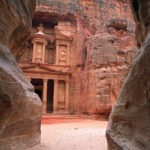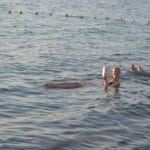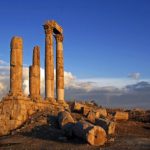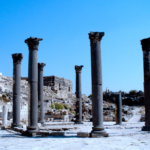Qasr al-Azraq
Qasr al-Azraq Tour From Different Cities
The Kharana Palace, Amra Palace, Azraq Castle Day Tour Start From Amman escorted with English speaking driver (From One to Three Persons in a Modern Sedan Vehicle. Four to seven using H1 Minivan ). Pick and drop off to / and from your hotel, early morning at 08:00 am and returns back to Amman around 16:00.
Tour itinerary
08:00 AM Home / Hotel Pick up.
9:00 AM Reach Kharana Palace.
10:00 Drive to Amra Palace.
10:30 Reach Amra Palace.
11:30 Drive to Azraq Castle.
12:30 Reach Azraq Castle.
1:30 Drive to Restaurant For Lunch (Optional).
2:30: Drive back to Amman.
4:00 Drop off your Hotel in Amman.
Inclusions
English Speaking driver.
Modern private Car with AC including gas
(Sedan for 3 Persons,
H1 Van for 4-7 Persons).
Hotel Pick-up and drop-off.
Exclusions
Entrance Fee Not included
Guides
Any Thing Not Mentioned
Entrance Fee
you Can show your Jordan Pass at the Main Entrance or you can buy the Entrance fee ticket from the main entrance.
Note
Lunch in Azraq City Cost around 10 – 12 JOD.
Driver (around 10% Total Charges) Tips Recommended.
The Kharana Palace, Amra Palace, Azraq Castle Day Tour Start From Dead Sea escorted with English speaking driver (From One to Three Persons in a Modern Sedan Vehicle. Four to seven using H1 Minivan ). Pick and drop off to / and from your hotel, morning at 08:00 am and returns back to Dead Sea around 16:30.
Tour itinerary
08:00 AM Home / Hotel Pick up.
9:30 AM Reach Kharana Palace.
10:30 Drive to Amra Palace.
11:00 Reach Amra Palace.
12:00 Drive to Azraq Castle.
1:00 Reach Azraq Castle.
2:00 Drive to Restaurant For Lunch (Optional).
3:00: Drive back to Dead Sea.
4:30 Drop off your Hotel in Dead Sea.
Inclusions
English Speaking driver.
Modern private Car with AC including gas
(Sedan for 3 Persons,
H1 Van for 4-7 Persons).
Hotel Pick-up and drop-off.
Exclusions
Entrance Fee Not included
Guides
Any Thing Not Mentioned
Entrance Fee
you Can show your Jordan Pass at the Main Entrance or you can buy the Entrance fee ticket from the main entrance.
Note
Lunch in Azraq City Cost around 10 – 12 JOD.
Driver (around 10% Total Charges) Tips Recommended.
The Kharana Palace, Amra Palace, Azraq Castle Day Tour Start From Madaba escorted with English speaking driver (From One to Three Persons in a Modern Sedan Vehicle. Four to seven using H1 Minivan ). Pick and drop off to / and from your hotel, morning at 08:00 am and returns back to Madaba around 16:30.
Tour itinerary
08:00 AM Home / Hotel Pick up.
9:30 AM Reach Kharana Palace.
10:30 Drive to Amra Palace.
11:00 Reach Amra Palace.
12:00 Drive to Azraq Castle.
1:00 Reach Azraq Castle.
2:00 Drive to Restaurant For Lunch (Optional).
3:00: Drive back to Madaba.
4:30 Drop off your Hotel in Madaba.
Inclusions
English Speaking driver.
Modern private Car with AC including gas
(Sedan for 3 Persons,
H1 Van for 4-7 Persons).
Hotel Pick-up and drop-off.
Exclusions
Entrance Fee Not included
Guides
Any Thing Not Mentioned
Entrance Fee
you Can show your Jordan Pass at the Main Entrance or you can buy the Entrance fee ticket from the main entrance.
Note
Lunch in Azraq City Cost around 10 – 12 JOD.
Driver (around 10% Total Charges) Tips Recommended.
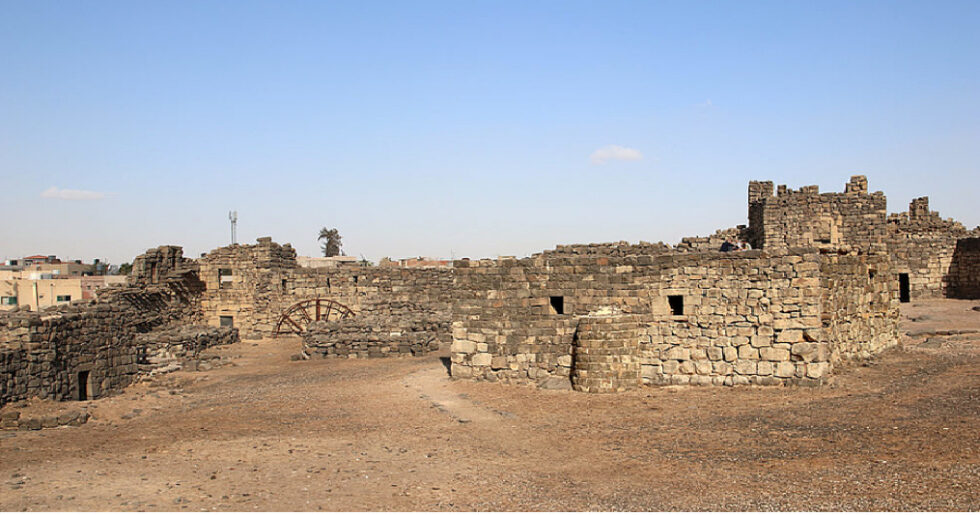
Qasr al-Azraq (Arabic: “Blue Fortress”) is a large fortress located in present-day eastern Jordan. It is one of the desert castles, located on the outskirts of present-day Azraq, roughly 100 km (62 mi) east of Amman.
Its strategic value came from the nearby oasis, the only water source in a vast desert region. The name of the fortress and the associated town came from these. The settlement was known in antiquity as Basie and the Romans were the first to make military use of the site, and later an early mosque was built in the middle. It did not assume its present form until an extensive renovation and expansion by the Ayyubids in the 13th century, using locally quarried basalt which makes the castle darker than most other buildings in the area.
Later, it would be used by the Ottoman armies during that empire’s hegemony over the region. During the Arab Revolt, T.E. Lawrence based his operations here in 1917–18, an experience he wrote about in his book Seven Pillars of Wisdom. The connection to “Lawrence of Arabia” has been one of the castle’s major draws for tourists.
Info From Different Resources
The castle is constructed of the local black basalt and is a square structure with 80 metre long walls encircling a large central courtyard. In the middle of the courtyard is a small mosque that may date from Umayyad times. At each corner of the outer wall, there is an oblong tower. The main entrance is composed of a single massive hinged slab of granite, which leads to a vestibule where one can see carved into the pavement the remains of a Roman board game.
Although very heavy — 1 ton for each of the leaves of the main gate, 3 tons for single the other — these stone doors can quite easily be moved, thanks to palm tree oil. The unusual choice of stone can be explained by the fact that there is no close source of wood, apart from palm tree wood, which is very soft and unsuitable for building.
The strategic significance of the castle is that it lies in the middle of the Azraq oasis, the only permanent source of fresh water in approximately 12,000 square kilometres (4,600 sq mi) of the desert. Several civilizations are known to have occupied the site for its strategic value in this remote and arid desert area.
The area was inhabited by the Nabataean people and around 200 CE fell under the control of the Romans. The Romans built a stone structure using the local basalt stone that formed a basis for later constructions on the site, a structure that was equally used by the Byzantine and Umayyad empires.
Qasr al-Azraq underwent its final major stage of building in 1237 CE, when ‘Izz ad-Din Aybak, an emir of the Ayyubids, redesigned and fortified it. The fortress in its present form dates to this period.
In the 16th century, the Ottoman Turks stationed a garrison there, and T. E. Lawrence (Lawrence of Arabia) made the fortress his desert headquarters during the winter of 1917, during the Great Arab Revolt against the Ottoman Empire. His office was in the chamber above the entrance gatehouse.
It had an additional advantage in modern warfare: the flat nearby desert was an ideal place to build an airfield.
According to Lawrence, “Azrak lay favourably for us, and the old fort would be convenient headquarters if we made it habitable, no matter how severe the winter. So I established myself in its southern gate-tower and set my six Haurani boys…to cover with brushwood, palm-branches, and clay the ancient split stone rafters, which stood open to the sky.” Ali ibn el Hussein “took up his quarters in the south-east corner tower, and made that roof tight.” The postern gate was shut each night, “The door was a poised lab of dressed basalt, a foot thick, turning on pivots of itself, socketed into threshold and lintel. It took a great effort to start swinging, and at the end went shut with a clang and crash which made tremble the west wall of the old castle.”
Lawrence wrote of their first night, “…when there rose a strange, long wailing round the towers outside. Then the cries came again and again and again, rising slowly in power, till they sobbed round the walls in deep waves to die away choked and miserable. Lawrence was told, “…the dogs of the Beni Hillal, the mythical builders of the fort, quested the six towers each night for their dead masters…their ghost-watch kept our ward more closely than arms could have done.”
Qasr al-Azraq is often included on day trips from Amman to the desert castles, along with Qasr Kharana and Qasr Amra, both east of the capital and reached via Highway 40. Admission is JD 2. Visitors can explore most of the castle, both upstairs and downstairs, except for some sections closed off while the rock is shored up.
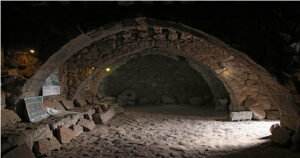
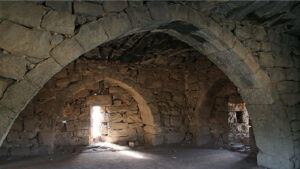
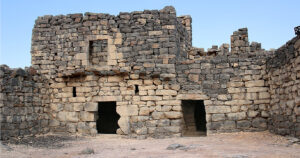
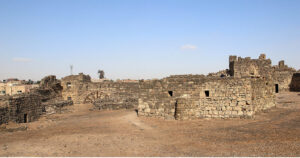
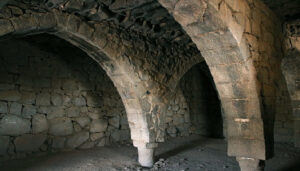
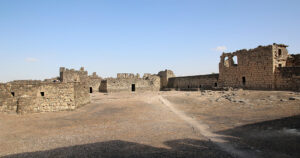
Unforgettable Memories Maker
Unforgettable Memories Maker
1 Day Tour
1 Day Tour
2 Day Tour
2 Day Tour
3 Days Tour
3 Days Tour
4 Day Tour
4 Day Tour
5 Day Tour
5 Day Tour
6 Day Tour
6 Day Tour
7 Day Tour
7 Day Tour
8 Day Tour
8 Day Tour
9 Day Tour
9 Day Tour
10 Days Tour
10 Days Tour
11 Day Tour
11 Day Tour
12 Day Tour
12 Day Tour
Online Booking
Car with Driver in Jordan
250$ - 160$ Per Day With Driver
150$ - 120$ Per Day With Driver
200$ - 150$ Per Day With Driver
300$ - 230$ Per Day With Driver
500$ - 400$ Per Day With Driver
Car with Driver in Jordan
All The Car with English speaking Driver.

Car with Driver in Jordan
All The Car with English Speaking Driver.
Car with Driver in Jordan Can Drive you
To The Following Sites in Jordan :

Quote your Jordan Tour itinerary
Quote your Jordan Tour itinerary with our Best Price.

No Credit Card Numbers Please.
You Should Confirm your Booking 48 Hrs Before your Tour.
Request Quote it’s not Just about The Price,
Jordan Tour Service Help you
to decide your Holiday with our advice.
we are happy to recommend and suggest your
Jordan Tour Plane with Different options and Quotes.
Feel Free to visit our other Offers.

